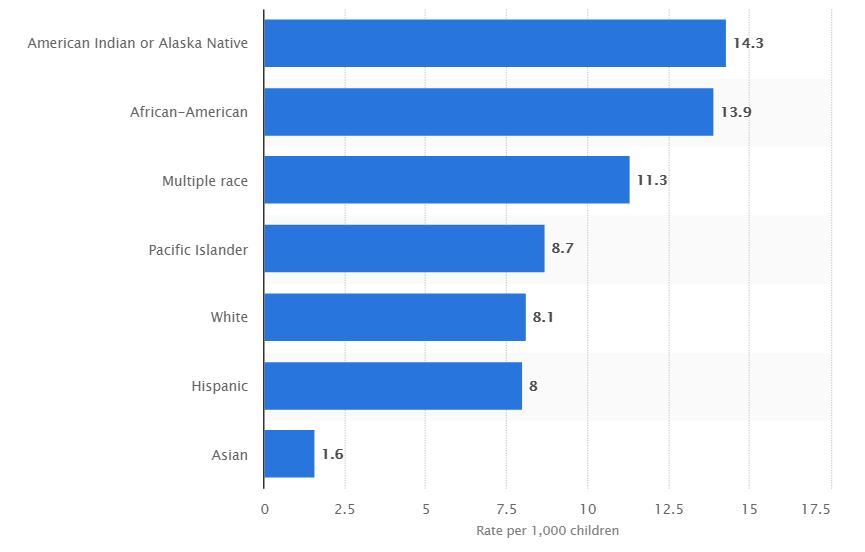Social workers who help families, children, and elderlies resolve their problems belong to this category. Most professionals delving in social work belong to this category.
Assist struggling individuals connect with their families, helping abandoned and abused children find a new home or adoptive parent, and finding resources for parents to provide better care to their children are some of the functions of a social worker under this group.
People who experience abusive relationships struggle to speak about their hardships. Relatives usually don’t know about the existence of such a situation. In rare instances, victims may find it easier to talk to a close friend about their experience. Situations like this make it even harder for a social worker, who is a total stranger, to encourage clients to talk about their problems.
 Child abuse rate by race/ethnicity of the victim
Child abuse rate by race/ethnicity of the victim
(Source: Statista)
One of the uses of a genogram in social work is how it paves a path towards open dialogue. Patients who have a hard time speaking about their experience will find it more comfortable to tell their story indirectly through writing or drawing.
While patients might not be ready to talk about their experiences, social workers can already get a picture of what happened, thanks to the detailed information a genogram provides. With this, professionals can devise a more effective way to deal with their patient’s issues.
Oftentimes, people are stuck on blaming the whole catastrophe the family is experiencing on a single member. They’re so fixated with their beliefs that they fail to see the bigger picture and how everyone may be connected to the problem.
Genograms can help families overcome limitations in their viewpoint when assessing solutions to an issue. Seeing the decision patterns that led them to the situation, they’ll have an expanded perspective on how to handle the problem.
In a school setting, they work with counsellors and teachers to address incidents of bullying.
Educating people on cultural diversity is also part of social work programs. In the US, social workers are mandated to develop a course content that will teach students about diversity in race, religion, age, ethnicity, and sexual orientation. However, lectures containing factual data and descriptive content were found to be ineffective in stimulating students’ awareness and sensitivity regarding the issue.
An interactive teaching method where doing activities with a group was found to be more adequate in developing cultural values.Creating a genogram challenges the students to examine their cultural stand and explore the perspective of their classmates who have different experiences and upbringing.